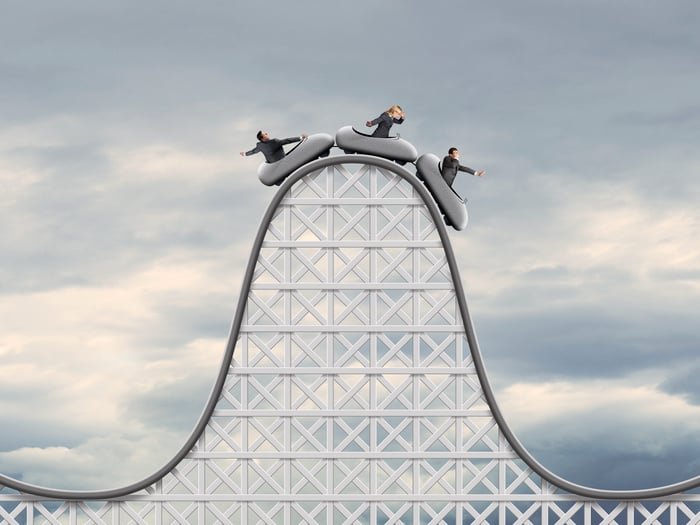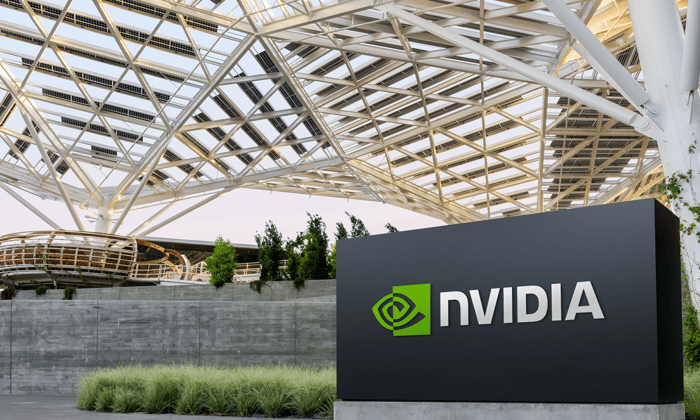If AI and crypto are not bubbles, we could be in big trouble.
What if the trillions of dollars placed on those bets turn out to be good investments? The disruption will be epic, and terrible.
A lot of speculative manias are just fun for a while and then the last in lose their shirts, not much harm done, like the tulips of 1635, and the comic book and silver bubbles of the late 1980s.
Sometimes the losses are so great that banks go broke as well, which leads to a frozen financial system, recession and unemployment, as in 1929 and 2008.
And sometimes the thing being speculated on is real and worthwhile, but people just get carried away and pay too much for it.
The first investors lose their shirts but subsequent ones clean up, like the internet bubble in the 1990s.
What we haven’t seen much of are speculative manias where the first investors win because there isn’t a bust.
Loading…
AI companies gain huge value
What if the double digital bubble of the mid-2020s — artificial intelligence and crypto — goes down in history as the first big one of those?
Somewhere between $3 trillion and $6 trillion has been invested in building AI infrastructure and software, and that has been responsible for almost all US economic growth over the past year.
The top 10 American AI companies have provided most of the US stock market’s gains over the past two years and are now valued at $35 trillion, almost half the total market.
Meanwhile there are 20,000 cryptocurrencies worth $5.8 trillion, of which Bitcoin represents more than half.
The total cash in the AI and crypto bets is more than a quarter of global GDP; it’s probably the greatest technology investment boom/bubble in history.
If it collapses, as many predict, that would be bad, possibly very bad if it doesn’t stop soon; but if it doesn’t collapse at all, it could be catastrophic.
AI will justify the investment in it by both replacing, and enhancing, human workers, as well as from subscriptions and advertising.
ChatGPT and the others are definitely useful tools, but when they’re used to make fake videos designed to fool us into voting for a crook, or fake nude videos of an unsuspecting classmate, or provide the answers to an exam, that’s not so good.
And that’s without the potential that some AI experts worry about, of AI becoming self-aware and self-perpetuating, and deciding to eliminate Earth’s human being infection.
More mundanely and pressingly, since the launch of ChatGPT in 2022, the share of online articles written by AI, as opposed to human beings, has gone from less than 10 per cent to 52 per cent — that is, there are now more of them than human-written ones and it’s still rising … to what, 100 per cent?
Loading…
Companies will keep laying people off
Estimates of permanent unemployment resulting from AI range from 10 to 50 per cent.
Let’s get one comforting idea out of the way for a start: it won’t be zero.
Companies are already laying people off because of AI and they are being rewarded by the share market for doing so, which means they’re going to keep doing it.
The weavers who lost their jobs when mechanical looms took over in the industrial revolution weren’t the ones being employed in the factories.
The writers, drivers and call centre staff who lose their jobs this time won’t get jobs as computer operators or software coders.
Economic historians call the period between 1790 and 1840 the “Engels Pause”, after Friedrich Engels, the German philosopher who worked with Karl Marx.
It describes a period when British working class wages stagnated and unemployment rose, while per capita gross domestic product expanded rapidly because of technology. The “pause” took 50 years.
In some ways, 50 per cent unemployment might actually be better than the 10 to 15 per cent most commonly predicted, because in that case there would be no doubt that a complete rethink of taxation and welfare, and society generally, would be required, including a universal income funded by AI profits.
But 10 to 15 per cent unemployment? That happens fairly often — it’s called a recession.
Except in this case, it wouldn’t be a recession, quite the opposite — there would be a productivity-driven GDP boom like the Engels Pause, so the usual anti-unemployment tools of monetary and fiscal policy (interest rates and government spending) wouldn’t be available because they would cause inflation.
But that might not be enough unemployment to force a wholesale rethink of social economics, just enough to cause a lifetime of misery for a few while the rich get richer.
Loading
Turning off AI won’t be possible
Last week I quoted the chief investment officer of HostPlus super, Sam Sicilia, about fusion energy, but we also discussed AI, in which his fund is also investing, like every other fund in the world. He’s worried about it.
“If you’ve got 15 per cent of your population unemployed permanently because AI is replacing low-level, entry-level jobs, those jobs are lost permanently, we’re never going back to the previous world,” he told me.
“If that happens in multiple industries simultaneously, how does society cope with that? A simple brutal answer might be, switch off the AI, but show me how that’s possible.”
No, turning off AI won’t be possible — there are about 40 trillion reasons (so far) not to.
Regulation of it is focusing on fakery and cheating, which is fair enough, but improving productivity per person through the simple method of replacing persons with non-persons (machines)? Go for it!
In fact there’s a global AI race on, including by governments.
The blockchain was created to replace trust with cryptographic proof. (Getty Images: Paul Yeung/Bloomberg)
Meanwhile in crypto
As for cryptocurrencies, Bitcoin, Ethereum, Cardano and most of the other 19,255 cryptos that have been conjured into existence, have a righteous purpose of providing a platform for people to deal directly with each other, peer to peer, rather than through expensive institutions.
The original white paper published by Bitcoin’s inventor, Satoshi Nakamoto, in 2008 began with: “Commerce on the Internet has come to rely almost exclusively on financial institutions serving as trusted third parties to process electronic payments. While the system works well enough for most transactions, it still suffers from the inherent weaknesses of the trust-based model.”
He invented the blockchain to replace trust with cryptographic proof, so two parties could transact confidently with each other without the need for an intermediary — that is, a bank. Thus Bitcoin was born.
But then Bitcoin and the other phantoms of the blockchain became speculative sport, and, as with AI, if they end up being worth the money that’s been bet on them, it could be terrible.
For a start, the intermediaries they are designed to replace employ a lot of people, but more importantly crypto’s anonymity is perfect for scams and money laundering.
For example, the Trump family is using two cryptos — the $Trump coin and World Liberty Financial — for some brazen presidential grift.
Last week the Australian Financial Review reported that Australians are feeding $275 million a year into crypto ATMs, of which there are 1,800 across the country. An 83-year-old woman, referred to as Mary in the piece, was robbed of $364,000 she had fed, note by note, into the machine.
Police and prosecutors are calling crypto ATMs “getaway cars” for scammers.
One way for AI and crypto to be turned off for a while so authorities can catch up would be for the bubbles to burst and for the first investors to lose their shirts.
That’s a strong chance to happen, but what if they’re not bubbles and there’s no bust because they move straight into being good investments?
It hardly bears thinking about.
Alan Kohler is finance presenter and columnist on ABC News and he also writes for Intelligent Investor.






